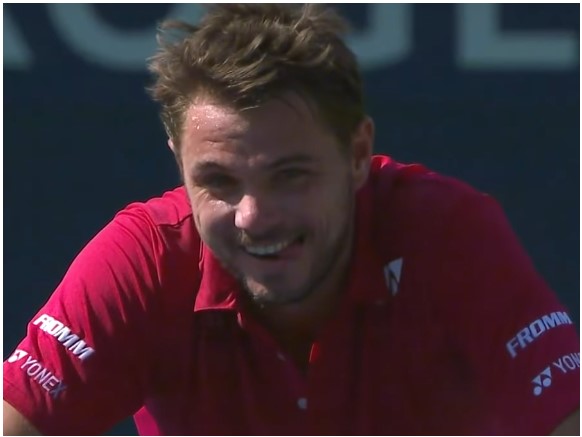You miss a shot, and you get frustrated.
“How can I miss that?”
“What am I even doing out here?”
“Has all my practice been for nothing?”
It’s an inner spiral that’s effected many a tennis player. But… what if we take those questions seriously? Instead of rhetorically chiding ourselves and then moving on (now emotionally impaired), why don’t we actually answer these three questions, and see what we get.
We’re going to answer these questions because, chances are, these questions actually do have answers, and the answers will cure the frustrating miss that generated the questions in the first place.
How can I miss that?
Did you…
- Adopt an athletic ready position before the shot?
- See the ball come off your opponent’s strings?
- Track it over the net?
- Move to the ball with triple flexion, staying balanced?
- Fully prepare before bounce, leaving only the forward swing remaining?
- See the ball right before the bounce, and then see the bounce off the ground clearly?
- Initiate your forward swing with the correct muscles?
- Keep your gaze still through your entire stroke production?
- Play the shot at your match speed?
If the answer to all of these is “yes,” then okay, it’s just an unlucky miss. Tennis is random. You can miss even if you do everything right.
When you really do execute everything right, though, your misses will be very rare. Chances are, the answer to at least one of the above questions is a hard “no,” and that “no” is your answer to “How did I miss that?”.

What am I even doing out here?
Hopefully, practicing the specific weaknesses in your game that are causing your frustrating misses – the “no”s from the previous list. Let’s say a “no” was to:
“Did you see the ball come off your opponent’s strings?”

If that’s the case, play through the rest of your session with your attention laser focused on your opponent’s contact. Split step at the correct time, landing right as you recognize the ball’s trajectory. See the ball come off your opponent’s racket, and right as you land from your split step, take an explosive first few steps towards where you want to be.
Do this over, and over, and over again.
Now do that for another practice, and another practice. After a month or two of practicing like this, the answer to “Did you see the ball come off your opponent’s strings?” will always be “yes,” and suddenly those frustrating misses will be much rarer.
Has all my practice been for nothing?
Probably not, but ask yourself a very specific question: What have I been practicing? Then, take stock of your improvement in those areas that you’ve been practicing.
Don’t worry about the shots you haven’t practiced much. You’re going to miss them.
A lot.
Tennis is extremely difficult. You have to coordinate your entire visual-control system – eyes, head, trunk, arms, legs, hand, etc – to track a fast moving ball over the net, explosively move to it, track it into and out of the ground, prepare for a stroke, stay on balance, and then explosively twist around and strike that ball, in a timing window smaller than a second.

If you haven’t practiced a certain part of the game, you’re not going to be good at that part of the game, plain and simple. So whenever you get frustrated at something, pause your negative thinking and ask yourself:
“Have I practiced this 100 times?”
If the answer is no, then chill out. You shouldn’t expect to be good at it. Practice it 100 times, then come back. Chances are, you’ll be happy with the results.





August 27, 2022
Again, the author hits the nail on the head focusing on the core of the problem. Answering the questions that are often asked is the first step to improving the game. “Practice makes perfect” is not just a folksy phrase. There is really something to it, and the author makes that clear.